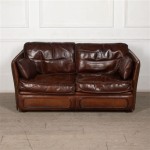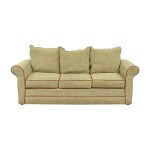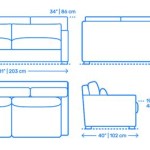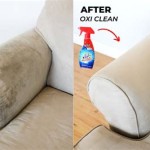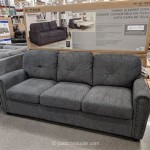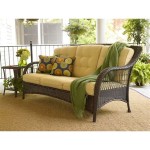What Material Are Sofas Made Out Of?
Sofas are a staple in many homes, providing comfort, style, and a place to relax. But have you ever stopped to think about what materials go into making these cozy pieces of furniture? From the frame to the upholstery, a sofa is composed of various materials, each contributing to its overall look, feel, and durability. This article will explore the common materials used in sofa construction, delving into their characteristics and advantages.
Frame Materials
The foundation of any sofa is its frame, providing structural support and determining its overall sturdiness. The most popular frame materials include:
- Hardwood: Known for its strength and durability, hardwood like oak, maple, and cherry are often used in high-quality sofas. They resist warping and bending, ensuring a long lifespan for the furniture. However, they tend to be more expensive than other options.
- Softwood: Pine and fir, while less durable than hardwoods, are used in less expensive sofas. Their affordability makes them a common choice, but they may require more maintenance to prevent warping or damage.
- Metal: Steel and aluminum frames offer a sturdy and lightweight alternative. They are resistant to rust and corrosion, making them a good option for high-moisture environments. However, metal frames can be more susceptible to scratches and dents.
When choosing a sofa, consider the frame material based on your budget, desired durability, and the intended use of the sofa. For instance, if you live in a humid climate, a metal or hardwood frame might be preferable to a softwood frame.
Upholstery Materials
The upholstery of a sofa refers to the fabric covering the cushions and frame. It plays a significant role in the sofa's aesthetics, comfort, and ease of maintenance. Common upholstery materials include:
- Fabric: Fabric upholstery offers a wide array of choices, from natural fibers like cotton and linen to synthetic materials like polyester and microfiber. Each fabric has its own advantages and drawbacks. For example, cotton is breathable and comfortable, while polyester is more durable and stain-resistant. Choosing the right fabric depends on your personal preferences, lifestyle, and the overall aesthetic of your home.
- Leather: Leather upholstery adds a touch of luxury and sophistication to any sofa. It's durable, breathable, and ages beautifully over time. However, leather can be expensive and require special care and cleaning. Not all leather is created equal, and different types of leather have varying levels of durability and softness.
- Vinyl: Vinyl is a synthetic material that mimics the look and feel of leather at a lower price point. It's durable, easy to clean, and resistant to spills and stains. However, vinyl can be less breathable than leather or fabric, and it might not feel as soft or luxurious.
Consider your lifestyle and budget when selecting upholstery materials. If you have pets or children, a durable and stain-resistant option like vinyl or microfiber might be better suited than a delicate fabric like linen.
Cushion Fillings
The cushioning of a sofa determines its comfort and support. Different types of fillings offer different levels of firmness and responsiveness. Common cushion fillings include:
- Down: Known for its luxurious feel and plushness, down is a natural filling derived from duck or goose feathers. It provides excellent support while conforming to the body's shape. However, down can be expensive and require regular fluffing.
- Foam: Foam is a popular and versatile cushion filling, available in various densities and types. High-density foam provides firm support, while low-density foam offers a softer feel. Foam is relatively affordable and easy to maintain.
- Fiberfill: Fiberfill is a synthetic material made from polyester fibers. It is soft, lightweight, and breathable. Fiberfill is often used as a secondary filling along with foam, adding additional comfort and resilience.
- Springs: Springs provide superior support and durability. They are typically used in conjunction with other fillings like foam or fiberfill. Different types of springs, such as coil springs and sinuous springs, offer varying levels of firmness and responsiveness.
The type of cushion filling you choose depends on your comfort preferences and the overall desired feel of your sofa. If you prioritize comfort and softness, down or low-density foam might be suitable choices. For those seeking firmer support, high-density foam or spring-based cushions might be more appropriate.
Other Materials
Besides the frame, upholstery, and cushion fillings, sofas often incorporate additional materials for functionality and aesthetics. These include:
- Legs: Sofa legs can be made from various materials like wood, metal, or plastic. They provide stability and can contribute to the overall style of the sofa. Consider the height and material of the legs to ensure they complement the design of your sofa and match your decor.
- Hardware: Hardware like buttons, zippers, and screws play a vital role in the construction and assembly of a sofa. They affect its functionality and durability. Choose high-quality hardware for a long-lasting sofa.
- Padding: Padding is used to soften the edges of the sofa and create a more comfortable seating experience. Padding materials can include foam, fiberfill, or a combination of both.
Pay attention to these details when selecting a sofa. Ensure the legs are sturdy and the hardware is durable to create a functional and long-lasting piece of furniture.

17 Types Of Sofa Materials In Malaysia Best Fabrics For Your Couch Cuura Space

Best Sofa Materials Leather Vs Fabric Sofas

High Quality Sofas How Is Your British Sofa Made Stuff

How To Make Sofas Diy Quora

10 Best Sofa Material Types That Are Perfect For Every N Home

Sofa Upholstery What Should You Know Before

What Is The Best Fabric For A Sofa Living Designs Furniture

Best Fabrics For Sofas The Inside

Leather Vs Fabric Sofa Which Is The Better Choice

5 Types Of Sofa Fabrics That Are Suitable For N Homes

